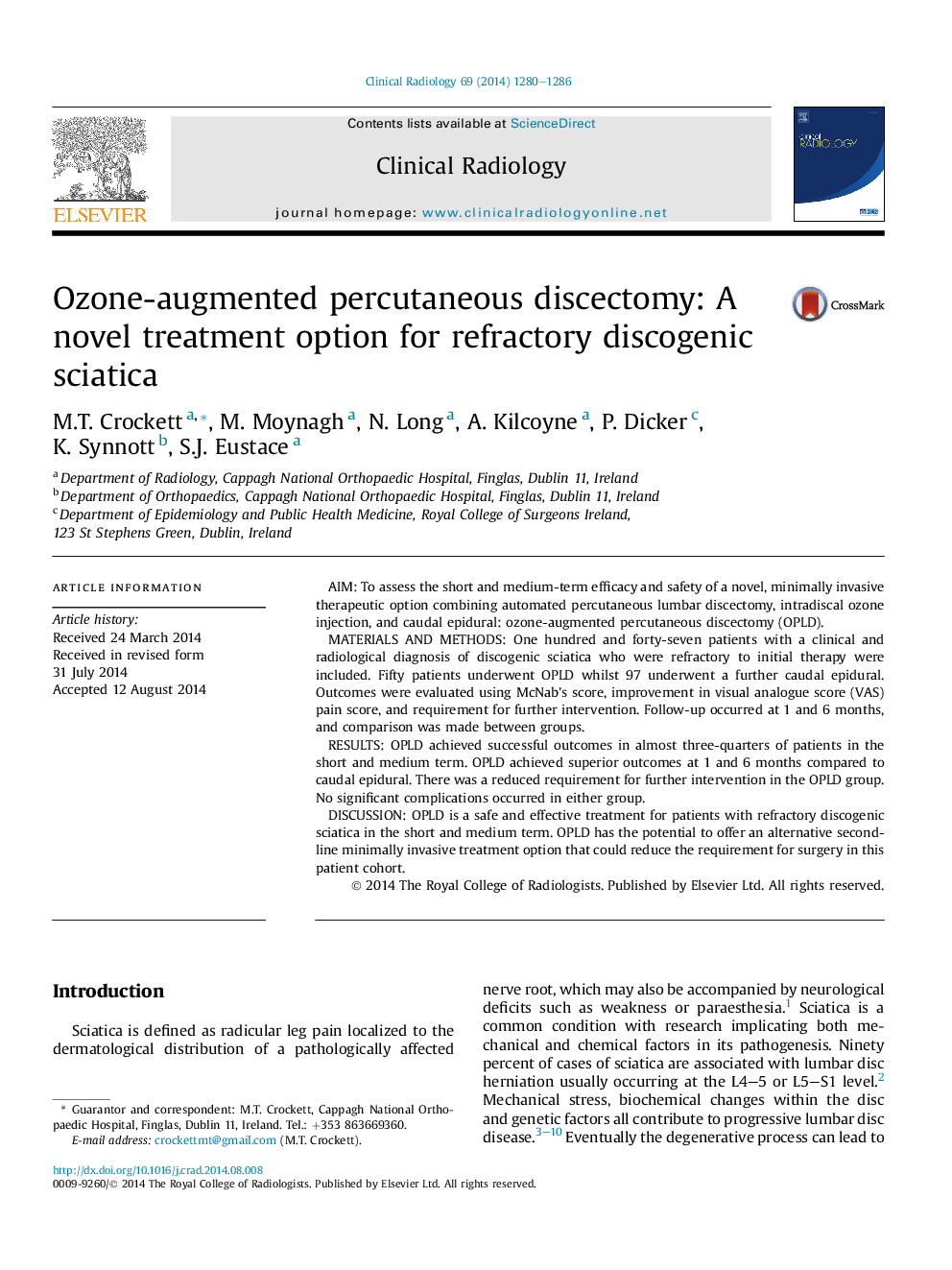| Article ID | Journal | Published Year | Pages | File Type |
|---|---|---|---|---|
| 3981655 | Clinical Radiology | 2014 | 7 Pages |
•Discogenic sciatica is a common condition which causes significant morbidity.•Ozone augmented percutaneous lumbar discectomy (OPLD) is a novel treatment.•Comparison was made to caudal epidural injection.•All outcomes were superior in the OPLD treatment group.•OPLD appears is an effective treatment for refractory discogenic sciatica.
AimTo assess the short and medium-term efficacy and safety of a novel, minimally invasive therapeutic option combining automated percutaneous lumbar discectomy, intradiscal ozone injection, and caudal epidural: ozone-augmented percutaneous discectomy (OPLD).Materials and methodsOne hundred and forty-seven patients with a clinical and radiological diagnosis of discogenic sciatica who were refractory to initial therapy were included. Fifty patients underwent OPLD whilst 97 underwent a further caudal epidural. Outcomes were evaluated using McNab's score, improvement in visual analogue score (VAS) pain score, and requirement for further intervention. Follow-up occurred at 1 and 6 months, and comparison was made between groups.ResultsOPLD achieved successful outcomes in almost three-quarters of patients in the short and medium term. OPLD achieved superior outcomes at 1 and 6 months compared to caudal epidural. There was a reduced requirement for further intervention in the OPLD group. No significant complications occurred in either group.DiscussionOPLD is a safe and effective treatment for patients with refractory discogenic sciatica in the short and medium term. OPLD has the potential to offer an alternative second-line minimally invasive treatment option that could reduce the requirement for surgery in this patient cohort.
